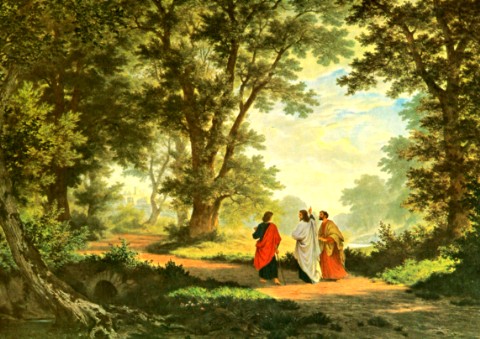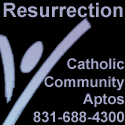The Feast of the Body and Blood of Christ

Cyprian Consiglio, OSB Cam
Cyprian Consiglio, OSB Cam. offered some interesting thoughts about the Feast of the Body and Blood of Christ (AKA Corpus Christi) today in his homily and his blog. He has graciously agreed to allow me to share them in a post for this feast.
The Inner Meaning
During this time of year when there are so many of our rites of passage taking place––weddings, graduations, ordinations (even birthdays)––it’s interesting to take a look at the purpose of ritual. Anthropologically speaking, a ritual is a way of expressing and passing on our understanding of reality or of an experience to someone else. So, for instance, a graduation is not about a piece of paper and a cap and gown: it’s weightier, it’s heavy; that’s why tears flow from the eyes of parents as they see their child graduate or get married. The ritual is trying to carry all those memories and meanings, and summarize them in a single gesture: an exchange of rings, the laying on of hands, a birthday card, an embrace, throwing a shovelful of dirt on a coffin: all these rituals mean more than they mean, they carry an almost indescribable load of treasures.
In the Roman rite we celebrate the Solemnity of the Body and Blood of Christ this week, and it’s safe to ask what Jesus was trying to convey to his disciples when he performed this rather odd ritual––not just breaking the bread and passing out the cup, but claiming that it was his very self. What exactly was he asking them to remember when they did it over and over again? I thought of five things, which certainly don’t exhaust the list of possible meanings.
1. First of all, this gesture looks backward and forward at Jesus’own life. Backward in that Jesus’ whole life had been spent being broken and passed out; his whole life had been dedicated to feeding those around him: taking care of their bodily needs through healing and feeding; and also feeding and healing them in a real way with the Wisdom of God, this incredible good news of God’s undying boundless care for every single hair on the head of very single human being from the greatest to––especially––the least. This ritual also looked ahead to the next day when Jesus allowed his body to be broken like bread and his blood poured out like wine––to say that it’s alright: you can survive even this, your real self cannot be annihilated, but like a seed that falls into the earth and dies it will yield a rich harvest of resurrection life.
2. This ritual symbolized––again what Jesus’ whole life symbolized––that Divine Love gives itself to humanity––that’s what God is like! The Divine is present, really present: divine love is offering itself to the world in this ritual meal.
3. This ritual also conveyed (and conveys) that this Divine Mystery is present everywhere, in creation, “in the earth and its produce.” Unfortunately the kind of hosts we use and our ornate chalices can actually hide the fact that this is actually wheat and grapes, real food: “which earth had given,” as we say, “fruit of the earth.” I think that this conveys that all matter is meant to be brought into right relationship with God, and that all matter can reveal and be a vehicle for the Grace of God. St Irenaeus wrote,
-
“This is why he took a part of creation, gave thanks and said: This is my body. In the same way he declared that the cup, an element of the same creation as ourselves, was his blood: he taught them that this was the new sacrifice of the new covenant.” (Irenaeus, Against Heresies)
But we add a line to the prayer over the gifts: it’s not just what ”the earth has given,” or “the fruit of the earth”; it’s also the work of human hands. There is a beautiful prayer of Teihard de Chardin:
-
I, your priest, will make the whole earth my altar––
And on it I will offer you all the labors and sufferings of the world…
I will place on the paten the harvest to be won by labor. . .
Into my chalice I will pour all the sap which is to be pressed out this day from the Earth’s fruits.
So, the fruit of the earth and the work of our hands all become vehicles for God’s grace, all is meant to be brought into right relationship with God.
4. This ritual is also meant to convey to us that God wants us to participate in the work of creation, and in divinity itself. That’s why we pray that incredible prayer, “by the mystery of the water and wine may we come to share in the divinity of Christ who came to share in our humanity.”
5. And how do we participate? Well, that’s the last thing I want to mention that this ritual is trying to convey (though we could go on and on): it conveys that this divine mystery is especially present whenever and wherever human beings meet and share together, that God is present in every gesture of unselfish love, in every occasion of someone laying down their life for another. That’s why we read the story of the washing of the feet before we celebrate the Mass of the Lord’s Supper on Holy Thursday.
The Hebrews didn’t need another ritual, another sacrifice; we don’t need another ritual; and God certainly didn’t and doesn’t either. The prophets leading up to Jesus kept telling the people how God was sick of their sacrifices and rituals! Jesus himself quotes the prophet Hosea twice saying: “Go and learn the meaning of these words, ‘It is love that I desire, not sacrifice. Knowledge of God rather than burnt offerings.’”
The church, and this ritual, has no other purpose but to communicate and convey and reveal that––the love and knowledge of God that is hidden in the heart of creation and poured into the center of every human being as our very source and our ground. This is what we will be judged on as a church, as individuals, as communities and as a whole: not the forms of our rituals and doctrines, but by the reality of the love and knowledge of God that we manifest.
Bede Griffiths wrote that: “All myth and ritual, all doctrine and sacrament, is but a means to awaken our souls to this hidden mystery, to allow the divine presence to make itself known.”
So: as we participate in this ritual, as we receive the Body and Blood of Christ, and/or when we gaze at the reserved Blessed Sacrament in the Tabernacle or in a monstrance, let’s remember how weighty it is, how much it carries and conveys. And let’s especially pray that it would awaken us to the mystery of the knowledge of God, and the love of God that is poured into our hearts, so that we might make it manifest in our world, so that we might be the body and blood of Christ––that we might be broken and poured out for the sake of the world as Jesus was.
cyprian
14 june 09














